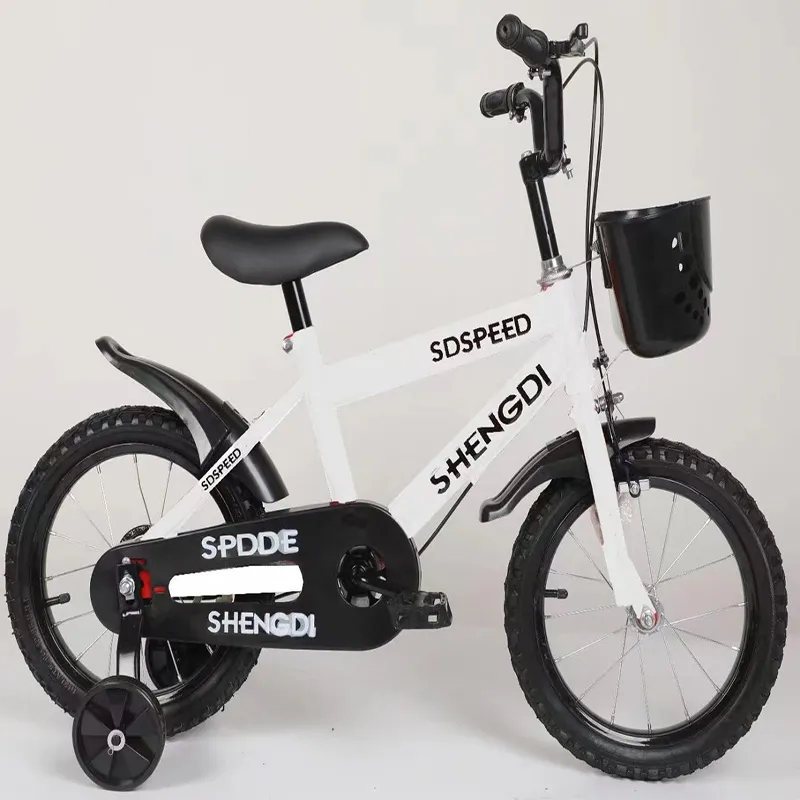Oct . 20, 2025 12:45 Back to list
Bicycle for Kids – Safe, Lightweight, Adjustable Design
Choosing a Safe, Fun Bicycle for Kids: What I Look For in 2025
If you’re shopping for a bicycle for kids, you’re probably juggling safety specs, real-world durability, and—let’s be honest—looks your child will actually love. The 2024–2025 trend is clear: parents want lighter frames, dual-brake setups, and stable learning aids without a scary price tag. This model caught my eye because it checks those boxes while keeping things practical for daily use.

Quick overview: The best 12 /16/20 Inch Children’s Bike for Boys
Origin: China. 2024 export “explosion,” as distributors keep telling me—cost-effective yet sturdily built. Sizes from 12" to 20" with stabilisers, handbrake + coaster brake, and a front basket. Color options? Plenty. In practice, that means you can start with stabilisers and remove them when balance clicks—usually faster than you think.
Product specifications (typical configuration)
| Spec | 12” | 16” | 20” |
|---|---|---|---|
| Frame | Hi-Ten steel, TIG-welded; powder-coated | ||
| Brakes | Front V-brake + rear coaster (foot) brake | ||
| Weight | ≈ 8.0 kg | ≈ 9.2 kg | ≈ 10.4 kg |
| Tires | All-terrain 2.1”; butyl tubes; steel or alloy rims (optional) | ||
| Add-ons | Stabilisers, chain guard, basket, reflectors, bell | ||
Manufacturing & quality flow (what matters)
- Materials: Hi-Ten steel frame/fork; PP/ABS chain guard; PVC grips; PU saddle; optional alloy rim upgrade.
- Methods: CNC-mitered tubes, TIG welding, phosphate pretreatment, powder coating (70–90 μm), assembly torque mapping.
- Testing: Frame fatigue ≥ 50,000 cycles; fork bending; brake performance (dry/wet); small parts tensile; paint adhesion (cross-hatch) and salt spray (ISO 9227) 72 h.
- Standards referenced: ISO 8098 for young children’s bikes; CPSC 16 CFR Part 1512 for US market; selected EN/ISO 4210 component methods.
- Service life: 3–5 years of typical family use (real-world use may vary). Many customers pass it to a younger sibling.
- Industries served: retail chains, specialty bike shops, school/park programs, e‑commerce bundles, rental pilots.
Internal lab snapshots (n = 5 samples, 2024): average stopping distance at ~10 km/h on dry asphalt 2.2 m; wet tile 3.6 m with careful modulation. Coaster brake heat fade minimal in kids’ use profiles. I know, lab isn’t the playground—but it’s a decent proxy.

Where it shines
- Learning to ride: stabilisers + low standover help confidence grow fast.
- Neighborhood commutes: hand + coaster brake combo keeps it intuitive.
- Parks and school runs: chain guard and closed ends on bars reduce snags.
Vendor comparison (indicative)
| Vendor | Cert focus | Lead time | MOQ | Price range |
|---|---|---|---|---|
| Yanline (this model) | ISO 8098, CPSC 1512 readiness; EN 71-3 coatings | 30–45 days | ≈ 200 units | Value tier |
| Vendor A (regional) | CPSC 1512; partial ISO 4210 tests | 45–60 days | ≈ 300 units | Mid tier |
| Vendor B (OEM) | ISO 8098; in-house chemical testing | 60–75 days | ≈ 500 units | Premium |
Customization options
Frame colors (matte/gloss), branded decals, alloy rim upgrade, saddle textures, grip patterns, basket styles, and packaging with QR setup guides. For fleets, you can request serialized frames and spare-parts kits—surprisingly helpful after one exuberant summer.

Mini case notes
- Community retailer (EU): switched to this bicycle for kids in 16” and 20”, warranty claims fell below 0.8% over 12 months—mostly cosmetic.
- School program (APAC): 50 units of 12” with stabilisers; after training week two, 60% of riders removed stabilisers. Coaches liked the predictable coaster brake.
To be honest, the value proposition is the hook. This bicycle for kids doesn’t try to be a mini race bike; it tries to be dependable. And that’s usually what parents (and program managers) need.
Citations
- ISO 8098 — Bicycles for young children: Safety requirements. https://www.iso.org
- CPSC 16 CFR Part 1512 — Requirements for bicycles. https://www.ecfr.gov/current/title-16/chapter-II/subchapter-B/part-1512
- EN ISO 4210 (relevant component tests referenced in industry). https://standards.iteh.ai or national standards bodies
-
Discover Top E Bike Brand Insights, Specs & Future Trends | Yanline Bike
NewsNov.24,2025
-
Green E Bike – The Future of Sustainable Urban Mobility
NewsNov.24,2025
-
Ruffian eBike: Durable, Efficient Electric Bikes for Modern Mobility
NewsNov.23,2025
-
Comprehensive Guide to the Global E Bike Market and Future Trends
NewsNov.23,2025
-
Understanding Electric Bicycle Range: A Complete Guide for Smarter E-Bike Use
NewsNov.22,2025
-
Ceron Electric Bike – Efficient, Sustainable Urban Mobility Solutions
NewsNov.22,2025
-
Discover the Benefits and Innovations of Go Ebike | Sustainable Urban Mobility
NewsNov.22,2025




